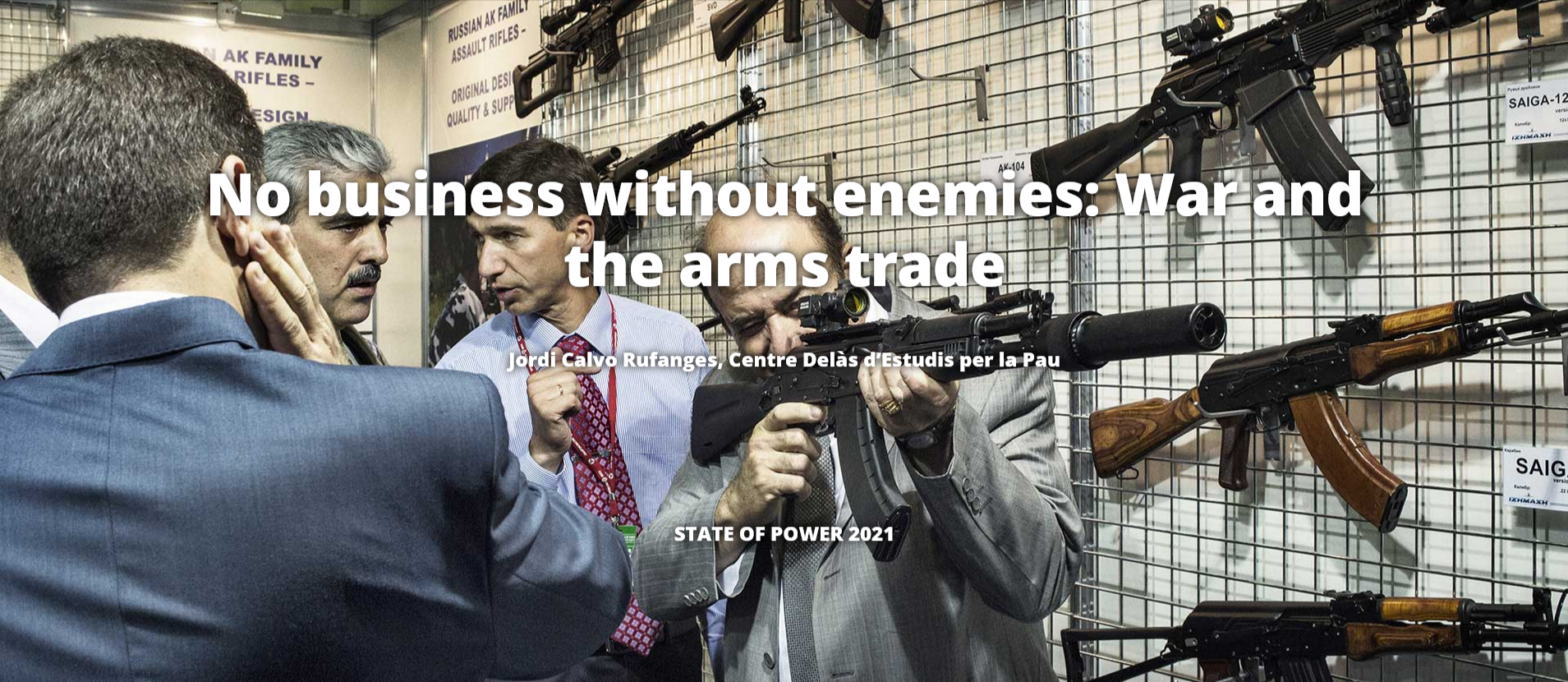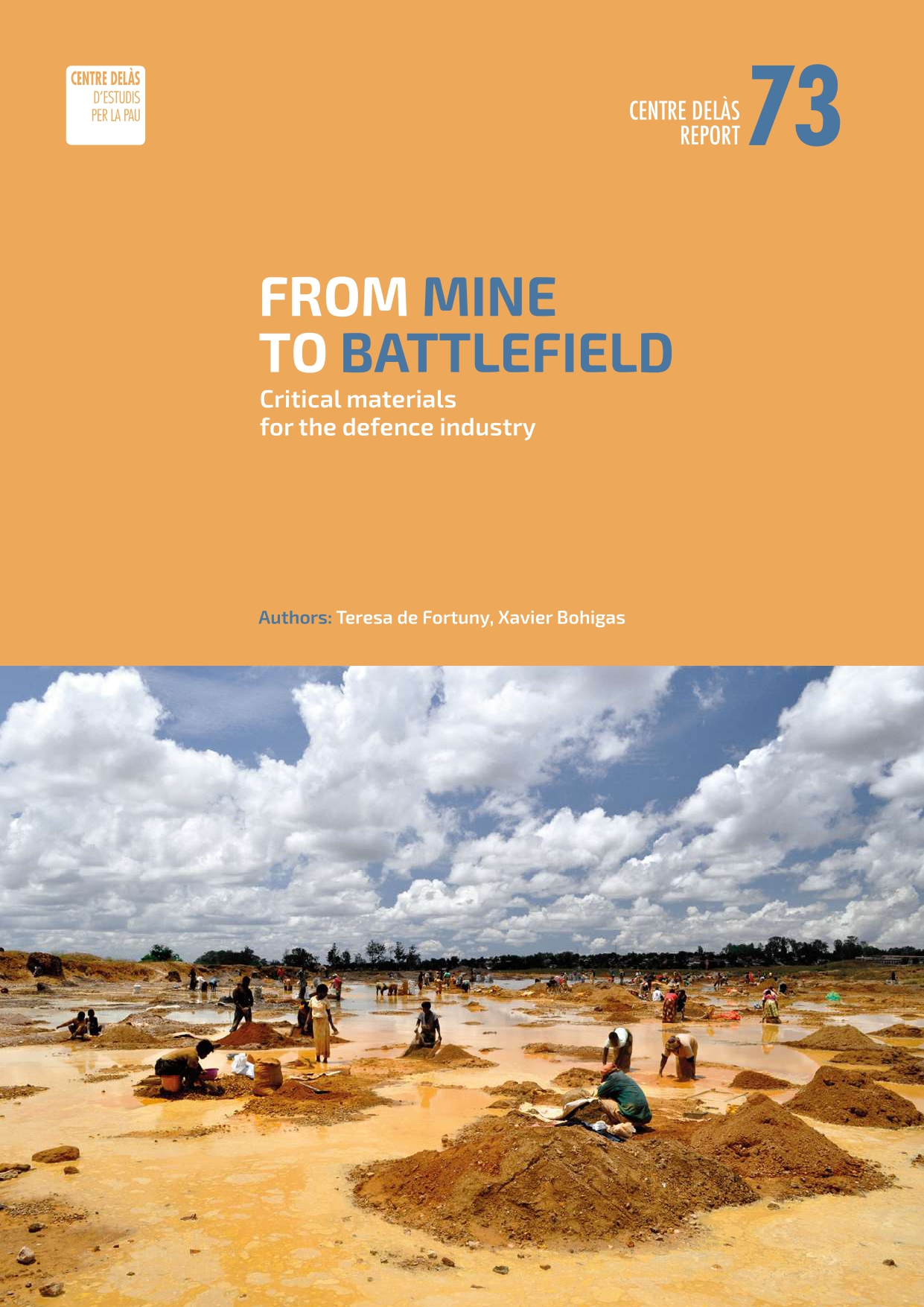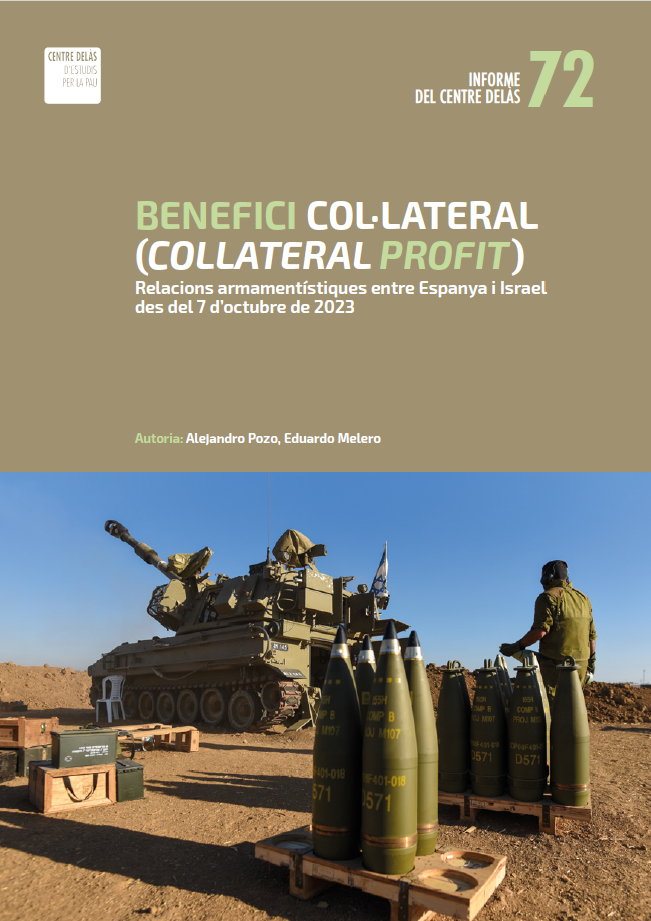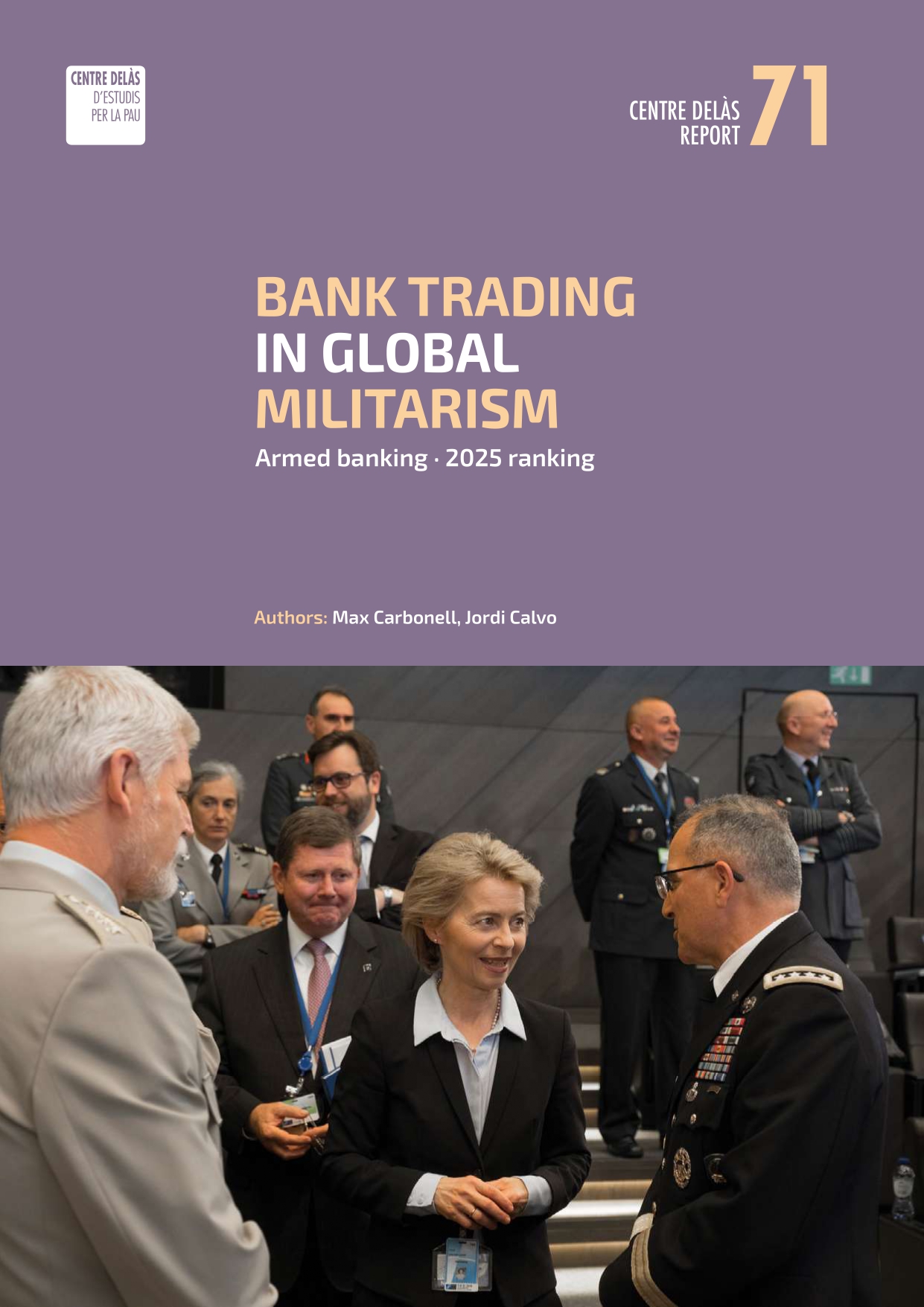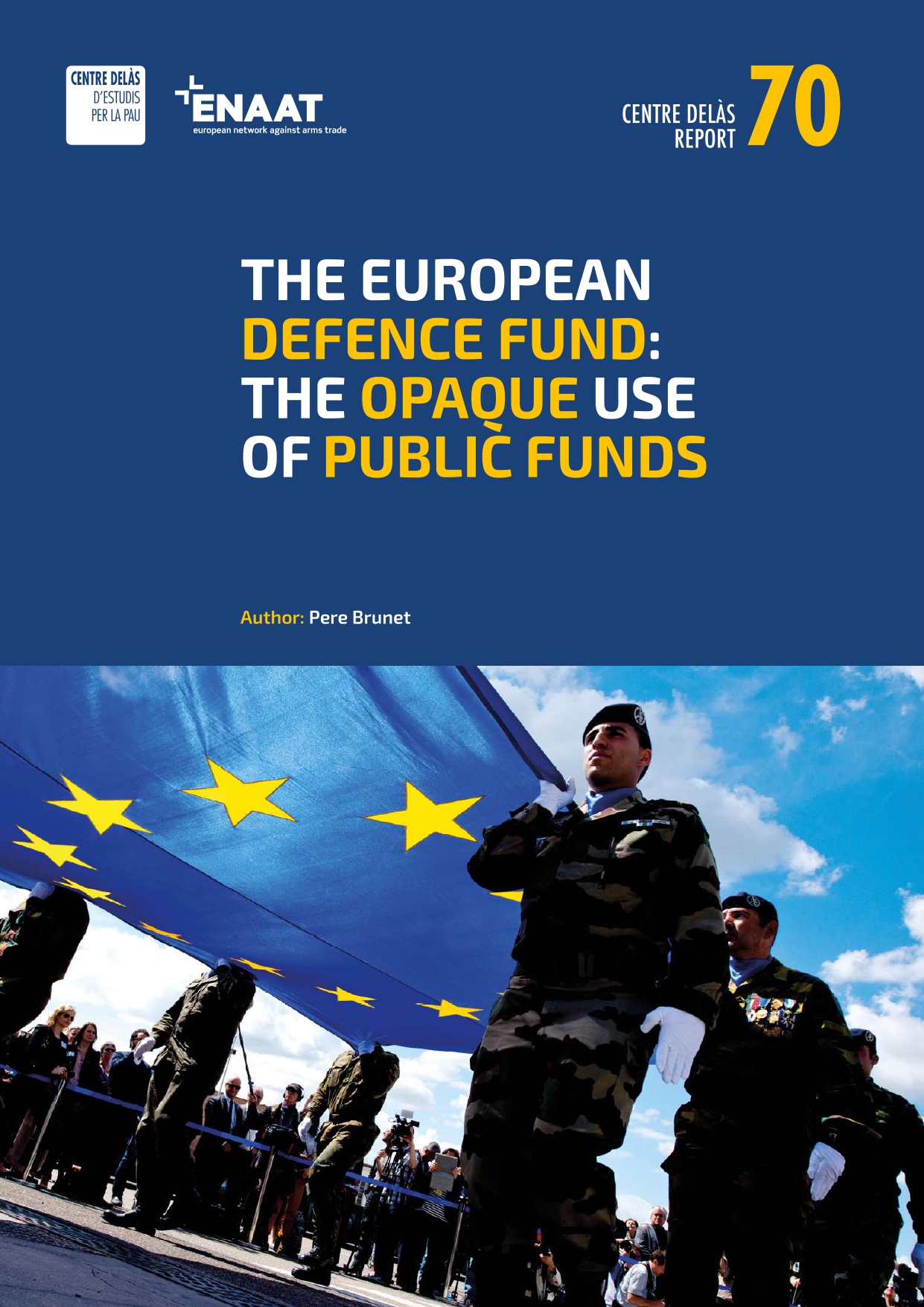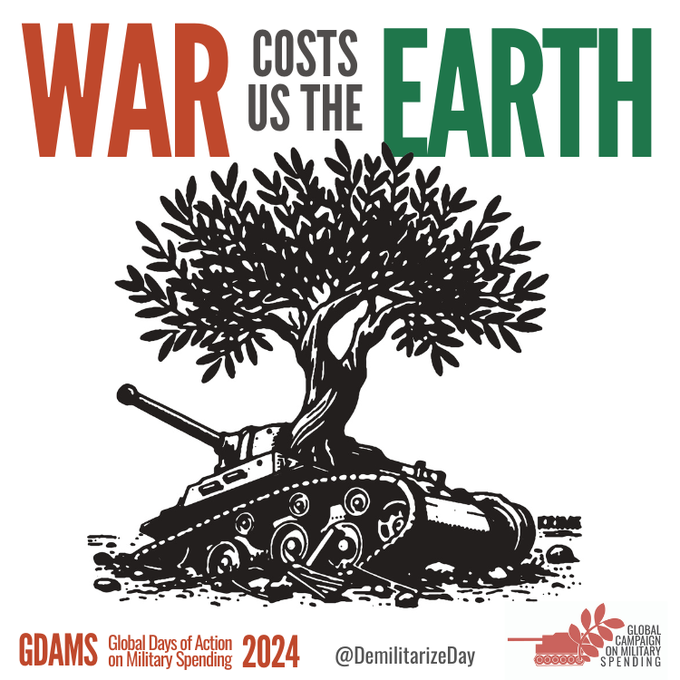No business without enemies: War and the arms trade
The arms trade is one of the world’s most successful corporate enterprises. Not only has it created an economic system that grows regardless, it has normalised war and security responses to every social crisis.
The COVID-19 pandemic has revealed how ineffective the armed forces are in dealing with a global crisis. They divert resources and distort our response. The pandemic – which is obviously first and foremost a health issue – has been managed by using a security-focused approach. Armed forces in some countries have been deployed rather than health workers to administer health-related interventions and logistical tasks as well as to enforce quarantines. The language of war has been used to describe efforts to tackle the pandemic rather than the language of human rights, public health or solidarity.
This militarisation of responses to social crises emerges not only in relation to global health risks, such as the current pandemic, but also in many other areas such as migration policies or climate change. Securitisation has become the framework for tackling ever more crises and situations.
Securitisation in the context of the essay sees all social, human and environmental domains as security threats which have military solutions. (Another use of the term ‘securitisation’ refers to the creation of complex financial instruments, an issue that will not be explored here.) If everything is subsumed under a securitisation approach, and at the same time not enough resources are allocated to cope with disasters triggered by natural hazards, health emergencies or environmental crises, then the most likely response will be to deploy the military.
Securitisation, built on a military security logic, is a mechanism that triggers fear. This fear is projected in terms of threats and enemies. Fear of climate change, fear of economic crisis, fear of uncertainty, fear of the unknown, fear of the outsider, the other, the migrant. Fear that justifies military preparedness for any threat to our security. Fear that confirms the need to defend – and arm – ourselves. Fear as the ideal marketing strategy for the products and services of the arms industry.
All this happens perhaps because ultimately governments tend to have a traditional military and political understanding of security, for which the reference point is the state and in which existential threats are interpreted primarily as affecting the essential organs of the state and its sovereignty. These understandings sideline or ignore the human security approach of the United Nations. In any case, securitisation uses fear as its political backbone.
This means that securitisation is both the cause and effect of a structural fear that leads to more resources being devoted to defence, the existence of which in turn is legitimised through cultural fear, with discourses that portray a world full of threats against which we need to defend ourselves.
In a society where fear is inculcated in citizens’ minds, few question the existence of a nefarious business like the arms trade. Moreover, the production and sale of arms is perfect from an economic perspective, as the supply of arms to one party invariably provokes arms races and so increases demand, while the widespread fear and insecurity thus created legitimises the permanent need for them.
It should also be pointed out that those who participate in and benefit from this business, who finance, invent, manufacture, buy and export arms are considered by most mainstream politicians, media and corporate leaders to be engaged in a respectable business that generates progress, employment and security.
Worldwide, people are participating directly or indirectly in the manufacture, sale and proliferation of arms. Despite its human impacts, the arms trade is also legal, legitimate and generally considered to be a normal business activity. Moreover, its unquestioned function has also facilitated a normalisation of war and the use of the armed forces to achieve political and often humanitarian ends.

According to Uppsala University, in 2019, 50 active armed conflicts caused more than 150,000 combat-related deaths. In Syria there have been at least 384,000 casualties related to armed violence and in Yemen 233,000, to mention two of the wars most reported in the media. In addition to these are the thousands of people who die while fleeing from war and the destitution caused by conflict. According to the United Nations High Commissioner for Refugees (UNHCR), 79.5 million people were forcibly displaced in 2019, often due to armed conflict. It has become tragically ‘normal’ for wars that cause thousands of deaths and millions of casualties every year to continue, with little done to stop them.
Armed conflicts have two main characteristics. They require considerable planning and organisation, and they invariably need their main tool: arms. Although arms or armies, private military companies or various types of armed groups do not cause wars, these would be impossible without the more than 27 million troops, paramilitaries, mercenaries, and guerrilla and other non-state fighters. Nor is it likely that they would be possible without the collusion between arms manufacturers and politicians, whose close relationship is epitomised in the so-called revolving door, whereby former high-ranking military officers join the boards of directors and management of the military industry and vice versa.
There are many examples of this all over the world, but an emblematic case is that of Pedro Morenés, who was Spain’s Minister of Defence from 2011 to 2016. Shortly before his appointment, he held top-level positions in various arms-manufacturing companies, including MBDA, one of the leading producers of missiles. Shortly before leaving his ministerial post, his legacy included the highest number of annual arms-export permits in Spain’s history.
Just as ministries of defence maintain and renew military structures and arms systems to defend their countries against identified security threats, these same ministries prepare to go to war, or to deploy their armed forces elsewhere in the world. Preparedness for war may be one of the factors that encourage the use of military muscle to achieve political objectives. This has been demonstrated in a quantitative panel data analysis that shows how military spending, the arms trade and armed conflicts have evolved in all countries for which data are available. It finds a clear correlation between global military expenditure, arms exports and the number of armed conflicts1
In other words, the cycle of arms production is consistent overall with the logic that more military expenditure equals more arms exports and therefore more wars.

War requires economic preparation, among preparation in other areas. It is here that the military–industrial complex and defence economics come in. Defence economics is defined as the set of measures that lead to a country’s economic transformation to meet its security and defence needs. It is the part of the economy that incorporates military–industrial policies related to the arms manufacturing sector. The term ‘military–industrial complex’ was first used in US President Eisenhower’s farewell address in 1961, when he referred to the huge influence of the sector’s lobbying on the White House. The military–industrial complex is thus the set of military corporations and to a lesser extent union organisations that try to influence government policy decisions with regard to arms purchases. As their income depends on defence budgets, one of their main areas of focus is to increase annual defence expenditure. An industrial complex has evolved from conventional arms manufacturing to combine the production of weapons using the latest technology with input from the security services, leading to a shift in the military–industrial complex towards products and services that respond to the needs identified in the securitisation approach. A new market and a new sector have emerged as a result, in which traditional arms manufacturers like Lockheed Martin or Leonardo share the space with these new companies in the security sector. This new military–industrial-security complex is likewise engineering the expansion of the securitisation doctrine, seeking to achieve multi-million defence and security budgets for the purchase of its products and technologies for areas such as cybersecurity. This includes the control of big data or the militarisation of borders and the securitised management of movements of people.
It is therefore logical that one of the key interests of the military–industrial complex is to lobby for policies that increase the defence budget, in order to secure its current and future business. As well as arms firms and intermediaries, the role of trade unions is also very important. By defending their job security, they put pressure on governments to increase military spending and allocate funding to the military industries in which they work.
If this was not enough, there is also a network of security think tanks located in the main policy decision-making centres. In Brussels alone there are hundreds of arms industry lobbyists, who influence politicians and officials as they develop laws related to the defence industry. Their objectives include pushing for arms manufacturing, sale, promotion and publicity to respond to a seemingly limitless number of threats. Some of the most relevant examples of the numerous think tanks that have a huge influence on security and defence are2 the Atlantic Council, Belfer Center for Science and International Affairs, Brookings Institution, Carnegie Endowment for International Peace, Center for a New American Security, the Council on Foreign Relations, Heritage Foundation and RAND Corporation (US), the International Institute for Strategic Studies and the Royal United Services Institute (UK), the European Union Institute for Security Studies (France), the National Institute for Defense Studies (Japan), the Institute for National Security Studies (Israel), the Australian Strategic Policy Institute, and the Institute for International Strategic Studies in China.

Within the defence economy there is the arms trade cycle or military economic cycle. This is the economic path followed by the arms industry, from a government’s decision to allocate budgets for arms spending to their ultimate use. The cycle encompasses everything related to a country’s military structure: security and defence policies, the national defence strategy, the military model, infrastructure, facilities, equipment and the required size of the armed forces. The arms trade cycle begins with public discourse and discussion that augments perceptions of threat, legitimises weapons and armies, and justifies high levels of militarisation and defence spending. While the neoconservative ideology most vigorously pushes for militarisation, more ‘progressive’ or liberal governments have invariably moved in the same direction. The Olin Foundation was one such foundation in the US advocating for militarism, giving $370 million to neoconservative ideological projects, with the funds coming mainly from the US military industry.
The arms trade cycle has several phases in which the main governments, corporations and financial institutions promoting the arms trade can be identified.
The first stage is military spending: the budget allocated to ministries of defence and others to support the military industry, military operations of all kinds and even paramilitary forces. In 2019, military spending reached its highest level since the end of the Cold War: $1.9 trillion according to calculations by the Stockholm International Peace Research Institute (SIPRI), equivalent to 2.2% of global gross domestic product (GDP).
Defence budgets also serve to maintain and promote the military sector of the economy through funds for Research and Development (R&D), as in the case of the European Defence Fund, which plans to allocate €13 billion of the EU budget for 2021-27 to European military R&D. Since governments are practically the only clients the arms industry has, they do all they can to ensure high levels of military spending. The ten governments with the highest levels of military spending account for 75% of the global total. They are, in order of magnitude, the US, China, India, Russia, Saudi Arabia, France, Germany, the UK, Japan and South Korea.
The arms industry forms part of the next phase in the arms trade cycle. The top 100 firms produce arms worth about $400 billion per year, according to the SIPRI Top 100 database. The main arms-producing companies are based in countries with high levels of military spending and arms exports: 57% are based in the US, 9.5% in Russia, and 22% in western Europe, but there are also significant companies from Japan, Israel, India and South Korea. In 2019 sales by the 25 most important arms-manufacturing firms were worth $361 billion. The biggest exporters by sales volume were the US corporations Lockheed Martin Corp, Boeing, Northrup Grumman Corp., Raytheon and General Dynamics; the Chinese firms Norinco and AVIC; the European companies Airbus, BAE Systems, Leonardo, Dassault and Thales; and the Russian firm Almaz-Antey.
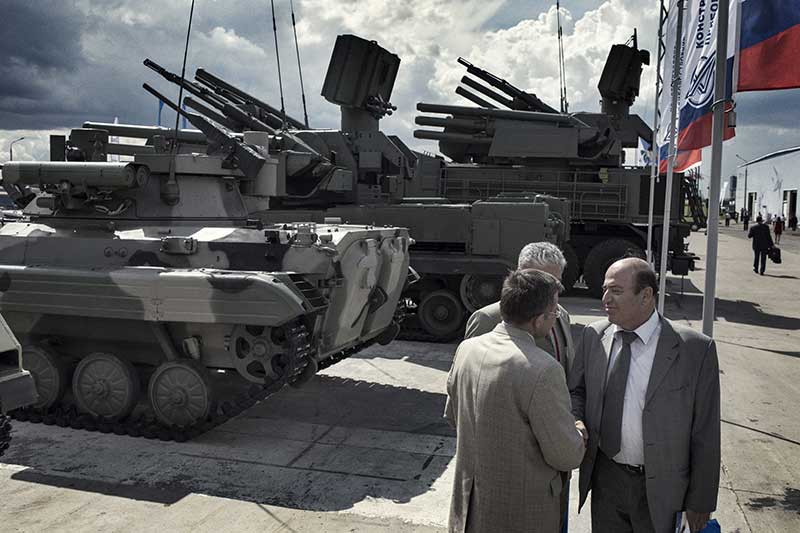
Arms exports are the next phase of the cycle. The annual volume of global exports is unknown and the information provided by governments is incomplete. Even so, it can be estimated that the EU member states and the US alone exported arms worth around €200 billion in 2018. The volumes tend to increase, despite EU and US laws to control the arms trade and the international Arms Trade Treaty itself. These all contain criteria to restrict the award of export licenses when the weapons are destined for countries where there is armed conflict or human rights violations. Nevertheless, arms are still exported regularly to most countries involved in armed conflicts, including Saudi Arabia, the United Arab Emirates (UAE), Israel, Egypt, Turkey, Iraq and Afghanistan. We know from the EU alone that 22% of arms exports were destined for countries involved in armed conflicts and 25% for countries experiencing political tension. The main arms-exporting countries in the 2015–2019 period are, in order of importance, the US, Russia, France, Germany, China, the UK, Spain, Israel, Italy and South Korea.
How is it possible to sell arms to countries in conflict when there are laws prohibiting it? The answer is very simple. The judgment regarding whether a country is involved in an armed conflict is subjective and sovereign. Each government decides which countries are affected by armed conflict based on the information at its disposal and its own interests, without needing to follow any objective criteria or refer to any formal – but in fact non-existent – international list. Nor are they required to take any account of reports produced by university departments specialising in peace and conflict studies. The same applies to judgments about whether human rights are violated in the country that imports arms. In every case the decision is political, rendering the system of arms control and associated legislation incapable of reducing arms sales to countries in conflict or where human rights are violated. In fact, the system promotes arms sales and provides them with legal backing.
There is one other aspect critical to the arms trade cycle: the financing of the corporate military sector. Arms-producing companies are financed by banks, insurance companies and all kinds of financial institutions, in the form of loans, credit, bond issues, shares, and the whole range of banking products that make their business possible.
According to the Worldwide Armed Banks Database, part of the Military Economic Cycle database of the Centre Delàs for Peace Studies, 37 of the world’s main arms-manufacturing companies – the most important of which are Boeing, Honeywell, Lockheed Martin and General Dynamics – have received $903 billion in funding from more than 500 banks in 50 countries. The main financial institutions involved in the arms trade are based in the US, France and the UK, and the top ten in the ranking of the main providers of finance to the industry worldwide are Vanguard, Black Rock, Capital Group, State Street, T. Rowe Price, Verisight, Bank of America, JP Morgan Chase, Wells Fargo and Citigroup.

Before and during the arms trade cycle, there is the need to justify the use of public money for military spending to citizens and avoid ethical and moral scandals related to arms manufacturing and exports that could undermine the arms business. This is why states and multilateral organisations in the military and security sector are constantly carrying out security and defence analyses. Their main objective is to identify what threats to security exist at any given time, the likelihood that they will occur, and how they should be addressed. Threats to security are the principal necessary (but not sufficient) step to then identify enemies against which a country must be defended through existing military structures and policies.
But, as mentioned earlier, the obsession with seeking threats in the securitising discourses typical of militarised security leads to creating a narrative that portrays a world dominated by fear and mistrust – the ideal scenario for militarisation.
The risks and threats to security identified in current defence strategies of the US, the EU and NATO are terrorism, violent extremism, armed conflicts and the so-called fragile states, as well as the proliferation of weapons of mass destruction, organised crime, threats to cybersecurity, energy security, maritime security, as well as climate change, irregular migration, management of external borders and economic crises.
There are other threats and risks about which there is far less consensus and which are often not addressed in security strategies. They include global outbreaks of infectious diseases, epidemics and pandemics; poverty and inequality; human rights violations; globalisation, interdependence and changes in economic equilibrium. This calls into question the very existence of defence structures, as these are areas in which the armed forces can play no role whatsoever.
In addition to these, there are also the more traditional geopolitical manoeuvrings: all western nations consider Russia, North Africa and the Middle East (MENA) region as especially worrying regions from the perspective of security. Other places often mentioned are North Africa and the Sahel, the Democratic People’s Republic of Korea, Iran, Turkey and China.
Together, the strategies portray a world riddled with threats against which we must defend ourselves, where even the maximum precaution is not enough. But are military structures useful for combating these threats? What exactly do we have to defend ourselves against?
In the case of international terrorism alone, which has been used to justify many of the foreign military interventions in recent years, particularly with the expansion of the Global War on Terror, we can see that the threat that could most easily justify a defence system has been neither reduced nor eliminated by means of military interventions. On the contrary, all they have done is to make things worse. The Global War on Terror, launched in Afghanistan in 2001 to put an end to the terrorist threat posed by Al Qaeda after 9/11, continued in Iraq 2003 and still continues in the Sahel. Rather than putting an end to terrorism, these wars gave rise to terror on an even greater scale perpetrated by ISIS/Daesh, which has and continues to be active in the most violent conflicts of recent years.
With regard to the other threats and risks, military responses are marginal, as they are more appropriately addressed by diplomacy, environmental policies, humanitarian action and international development cooperation, social services, economic measures, health and education policies, police, the justice system, etc.
Security analysis is never morally or politically neutral, as it is not a matter that can be objectively measured but is open to multiple subjective interpretations. Due to the power structures in society, however, interpretations of security are heavily skewed towards the interests of governments and elites. We find that security and defence doctrines are weighted towards the military and state defence structures. Furthermore, those with the greatest vested interest in promoting military responses to anything that could be considered a risk or threat to security are the corporations involved in the arms trade, as their business depends on it.
The best scenario for maintaining their profits in the long term is to make the military industry the source of all solutions to the security challenges facing a society. In some countries, they can achieve this directly, by making donations to candidates and political parties. In the 2020 US election, they donated $30 million to both Democrats and Republicans, with some of the major donors being Northrop Grumman, Boeing, Lockheed Martin, General Dynamics and Raytheon. They can also achieve it indirectly, through the work of the security and defence lobbyists and industry groups created and financed by the corporations themselves. The European lobbyists AeroSpace and Defence Industries Association of Europe (ASD) and the European Organisation for Security (EOS) are good examples of this.

The UNESCO Constitution states that ‘since wars begin in the minds of men, it is in the minds of men that the defences of peace must be constructed’. Seventy years after that certitude that war must be eliminated from people’s minds, military responses continue to be promulgated as the principal response to security threats, even though reality has demonstrated that they are counterproductive. Military budgets, the profits of the arms manufacturers, arms exports, and armed conflicts continue to expand, even while their contribution to security is increasingly in doubt. We need to dismantle the beliefs that serve to normalise war, the arms used to fight it and the business it creates. The militarisation of societies and international relations perpetuates the wars of today and is the breeding ground for those of the future.
Jordi Calvo Rufanges is vice-president of the International Peace Bureau, coordinator of the Global Campaign on Military Spending, professor of armed conflicts, defence economy and international relations and coordinator and researcher of the Centre Delàs of Peace Studies, Barcelona, Spain. He is editor of Military Spending and Global Security : Humanitarian and Environmental Perspectives (Routledge, 2021). Twitter: @CentreDelas
Notes
1 Meulewaeter, C. (2021)’Military expenditure, arms transfer and armed conflicts’, in J. Calvo Rufanges (Ed.) Military Spending and Global Security. Abingdon: Routledge.
2 ‘15 top think tanks in the ranking “2019 Top Defense and National Security”’, in McGann, James G. (2020) ‘2019 Global Go To Think Tank Index Report’, TTCSP Global Go To Think Tank Index Reports 17.
Read TNI's State of Power 2021 here

